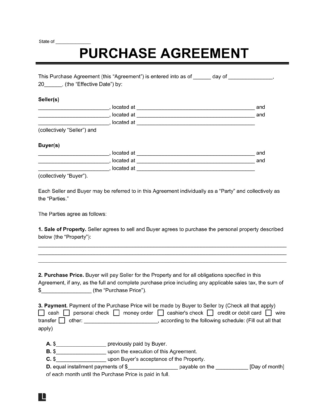
Use our purchase agreement to record the sale of an item.

Updated June 21, 2024
Written by Sara Hostelley | Reviewed by Brooke Davis
A Sales and Purchase Agreement (SPA) is a legal contract that details the agreement’s terms and conditions. It safeguards both buyer and seller by clarifying the transaction’s specifics. SPAs are particularly valuable for transactions involving real and personal property, such as homes, businesses, vehicles, and other personal items.
Yes, SPAs are legally binding contracts once both the buyer and seller sign them.
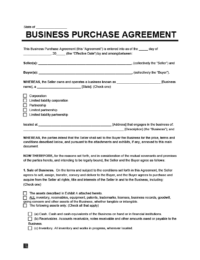
Use this agreement to record the sale of a business.
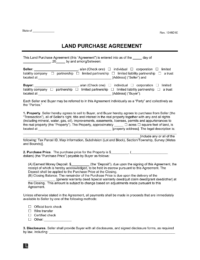
Use this agreement to sell and buy land parcels of various sizes.
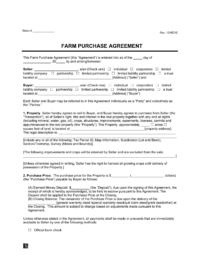
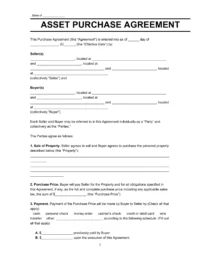
Use this agreement to buy or sell the assets of a business.

Use this agreement to record the purchase of stock.
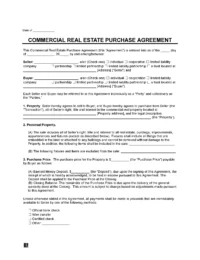
Use to purchase commercial real estate.
A purchase agreement is a legal contract between a buyer and a seller. It describes the circumstances of the sale, including the property being sold and the agreed-upon purchase price.
It fulfills three main purposes:
In real estate transactions, the terms “Sale and Purchase Agreement” (SPA) and “Purchase and Sale Agreement” (PSA) are interchangeable, both referring to the same type of contract. These agreements detail the terms and conditions under which a property is to be sold and purchased.
A purchase order primarily signals a buyer’s intent to acquire specific items, including details such as price, quantity, and product type. It initiates the purchasing process but doesn’t finalize the terms of the sale.
A sales and purchase agreement, on the other hand, is a comprehensive and binding contract often negotiated and executed following the issuance of a purchase order. This agreement formalizes the sale, outlining the agreed-upon terms and conditions, including payment and delivery specifics.
The key difference lies in the stages of the transaction they represent: a purchase order indicates a desire to purchase, while a sales and purchase agreement cements the commitment to the transaction’s terms.
A seller and a buyer sign a purchase agreement before exchanging money or property. It’s a testament between the parties to enter into a future transaction, and it helps both parties understand and agree to the decided terms.
While a purchase agreement documents a sale, a bill of sale transfers property ownership from the seller to the buyer, the parties typically sign it during the exchange of money and property, and it can serve as a receipt of the transaction.
A buyer can only use a bill of sale, not a purchase agreement, to prove property ownership.
Buying a house is a significant milestone in anyone’s life. It involves steps that demand careful planning and attention to detail. Here’s a comprehensive guide to navigating through the process smoothly.
Before embarking on the house-hunting process, it is crucial to evaluate your finances. Understand your credit score, savings, debt-to-income ratio, and how much you can afford. This will give you a clear picture of your budget and help you set realistic expectations.
Securing a mortgage prequalification is an essential step. Based on your financial overview gives you an idea of the loan amount you might qualify for. This will further refine your budget and make you a credible buyer in the eyes of sellers.
Finding the perfect property can be conducted online or through a real estate agent. To streamline your search, consider your priorities, such as location, size, amenities, and neighborhood.
When you’ve identified the perfect house that meets all your criteria, it’s essential to proceed to the next step, which involves making an offer. Consider drafting a real estate letter of intent to ensure your offer is competitive and clearly communicates your interest and conditions. This document allows you to outline the terms of your offer professionally, making it clear that you are serious about the purchase while remaining within your financial capacities.
Upon agreement with the seller, an earnest money deposit is required to demonstrate your commitment to the purchase, which is typically held in an escrow account.
This legal document outlines the terms of the sale, including the purchase price, contingencies, and closing date. It’s a crucial step to solidify your intentions and protect both parties.
You may need to negotiate repairs with the seller based on the home inspection findings. This can either fix the issues or adjust the purchase price accordingly.
Select the best mortgage option based on your financial situation. It could be a fixed-rate mortgage, an adjustable-rate mortgage, or another type that suits your needs. Ensure that all necessary documentation for loan processing is gathered and submitted.
Before you finalize the transaction, perform a last walkthrough of the property. This ensures that all repairs agreed upon in the contract are completed and that the house is in the expected condition. After this, it’s time to sign the necessary documents, including the warranty deed , which legally transfers property ownership to you. Once everything is in order, you’ll close the deal and receive the keys to your new home.
Addendums are additions to the purchase agreement and are terms that aren’t found elsewhere in the document. Contingencies are one type of purchase agreement addendum.
Here are some common addendums within a real estate purchase agreement:
Disclosures in a purchase agreement provide the buyer with information about potential property issues or other information they should know. The items outlined could impact the home’s value or legal mandates about specific safety or health problems. Some examples of disclosures include the following:
Amendments are legal documents that modify the original real estate purchase agreement. It is typically used to address unexpected changes or correct errors in the original contract. When properly created and signed, the amendment becomes a legally binding document.
When buying a home, it’s essential to understand that in some states, laws don’t require sellers to tell you about major problems with the property. This rule is known as “buyer beware” or “caveat emptor,” which means you’re buying the property in its current condition, whatever that may be.
Here’s how you can safeguard your interests:
Getting a detailed inspection is crucial, particularly in states that follow the “buyer beware” principle: Alabama, Arkansas, Georgia, North Dakota, Virginia, and Wyoming.
Earnest money is a crucial part of the home-buying process, serving as a buyer’s deposit to demonstrate their commitment to a property purchase. The exact amount of this deposit varies, typically ranging from 1% to 10% of the home’s sale price, depending largely on the current real estate market dynamics. This deposit not only signifies the buyer’s seriousness but also acts as a protection for the seller against potential buyer withdrawal.
A detailed contract accompanies the earnest money exchange, outlining specific conditions that dictate the circumstances under which the deposit can be refunded. This agreement is vital for protecting both parties involved and ensuring clarity and fairness in the transaction.
However, the arrangement also contemplates situations where a buyer might legally retract their offer without losing their earnest money. These provisions, known as contingencies, cover various scenarios—like the discovery of significant property flaws during an inspection or the buyer’s inability to secure financing—allowing the buyer to back out of the deal under predefined terms.
If a buyer breaches the contract without a covered contingency, they risk forfeiting their earnest money deposit as compensation to the seller for the lost opportunity. To safeguard the deposit, it is typically held in escrow by a neutral third party until the transaction concludes or a dispute arises, ensuring fairness and security for both buyer and seller. Interest earned on the deposit while in escrow usually benefits the buyer, contributing towards their closing costs or down payment. This framework ensures a balanced, committed approach to the real estate transaction process.
Before filling in the details of your real estate purchase agreement, identify the state where you will execute the contract.
Additionally, provide the effective date of the agreement.
1. Seller. Write down the seller’s full name. Indicate if the seller is an individual or entity, such as a corporation, LLC, or trust. Provide the seller’s street (physical) address.
2. Buyer. Enter the buyer’s full name. Indicate if the buyer is an individual or entity, such as a corporation, LLC, or trust. Provide the buyer’s street (physical) address.
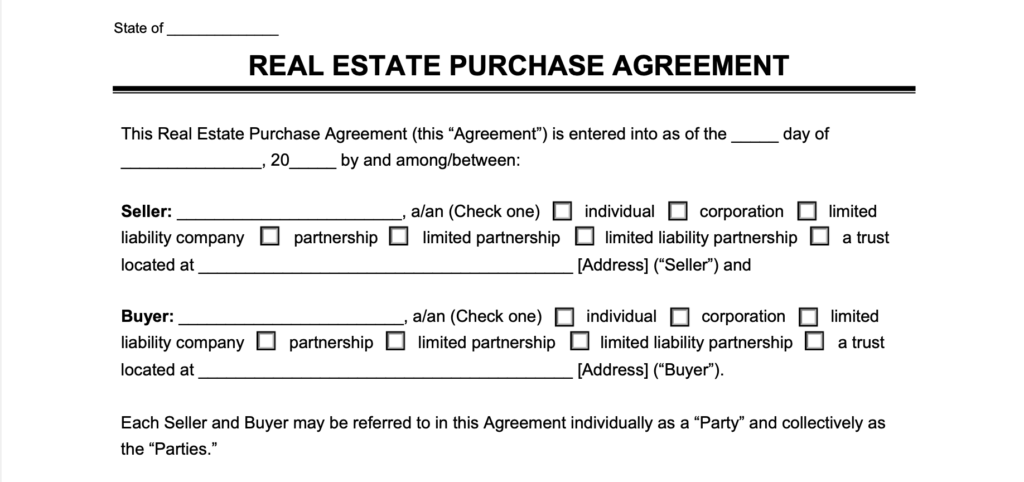
3. Property. Fill out the street (physical) address of the property the buyer is purchasing. Include any unit or apartment number, if applicable. Enter the legal description of the property.
A legal description is a geographical description of the property, commonly identified by a government survey, metes, bounds, or lot and block. You can find the legal description in the property’s deed or through the county assessor.
4. Included. Summarize what the sale will include. The purchase includes all real estate, buildings, improvements, appurtenances, and fixtures. You have the option to include additional personal property items in the sale.
5. Excluded. You can choose whether to exclude certain fixtures and items from the sale. If you do, provide a list of those items so the buyer isn’t confused when they don’t receive certain items.

6. Purchase Price. Fill in the total purchase price for the property.
7. Earnest Money Deposit. Write the total amount of the earnest money deposit (or the “good faith deposit”), which is the deposit the buyer makes showing good faith and commitment to purchase the property. At closing, the earnest money deposit shows as a credit toward the purchase price.
The earnest money deposit amount varies depending on several factors but is generally 1 to 3% of the purchase price.
8. Payment Method. Enter the payment method (how the buyer will pay the seller).
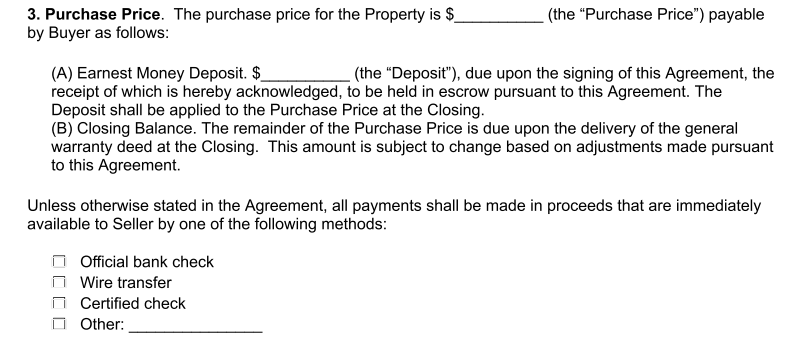
9. Disclosures and Defects. You can specify seller disclosures, such as environmental hazards, flooding or drainage issues, etc.

10. Assumption of Loan. State whether the buyer will take over the seller’s mortgage. If yes, provide the following mortgage details:
Also, choose whether the seller or buyer will pay the fees related to the mortgage transfer.

11. Terms of Mortgage. Choose what you want the terms of the mortgage to be.
12. Buyer’s Obligations. Write whether you want the agreement contingent upon an appraisal with a value equaling or exceeding the purchase price.
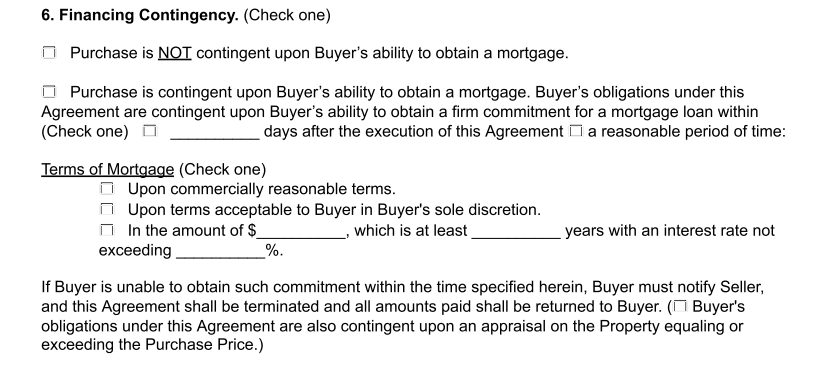
In some cases, the purchase agreement might involve the assumption of the seller’s existing mortgage by the buyer. If this applies, it’s crucial to include provisions regarding the mortgage lien release within the agreed-upon timeline.
13. Sale of Another Property. State whether the agreement is contingent upon the buyer first selling a property, also called a home contingency. If yes, provide the street address of the property the buyer must sell first.

14. Standard Seller Representations and Warranties. The purchase agreement provides for these standard sellers’ representations and warranties regarding title, authority to sell, and the property not violating government rules, codes, permits, and regulations.
15. Additional Seller Representations. You can add any additional seller’s representations and warranties listed on a purchase agreement and add your own.
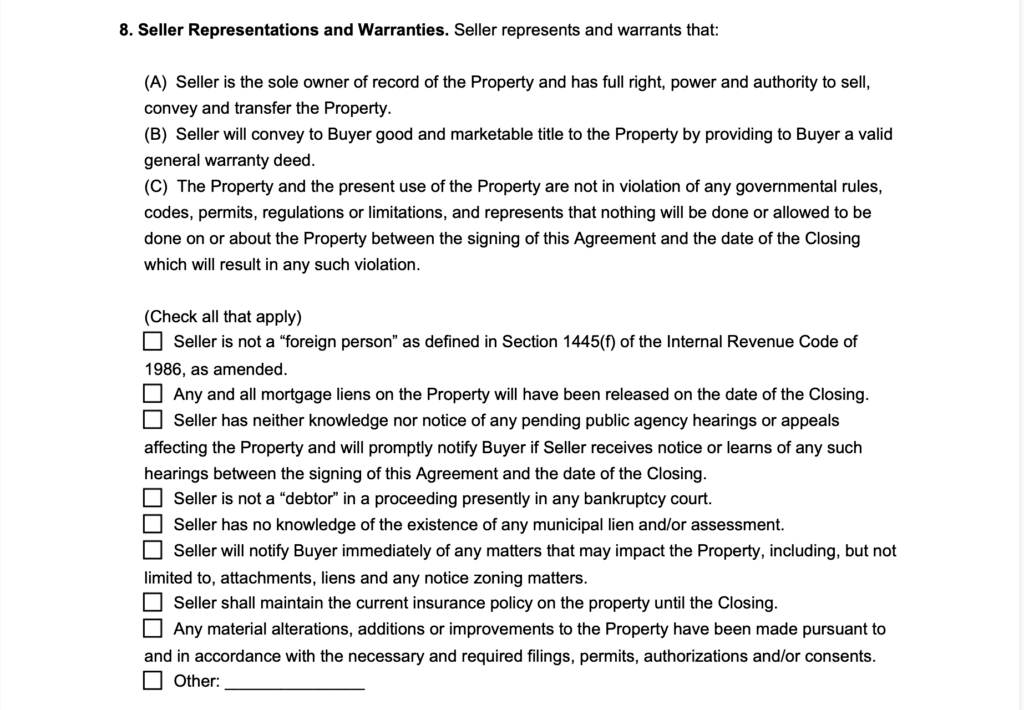
16. Inspection Contingency. The agreement provides that the purchase is contingent upon the buyer’s inspection. The buyer can request the seller fix or repair any unsatisfactory conditions. You can choose whether to include a date by which the buyer and seller must agree on repairs.

17. Title Insurance Policy. This section pertains to a title insurance policy. You choose who pays for the title insurance, who selects the insurance company, and whether or not you want to include any allowable exclusions or exceptions to the policy.
18. Dates for Objections. Provide the days the buyer has to notify the seller of any objections to the title after receiving the preliminary report. Enter the days the seller has to correct or address the complaints after receiving the buyer’s notice.
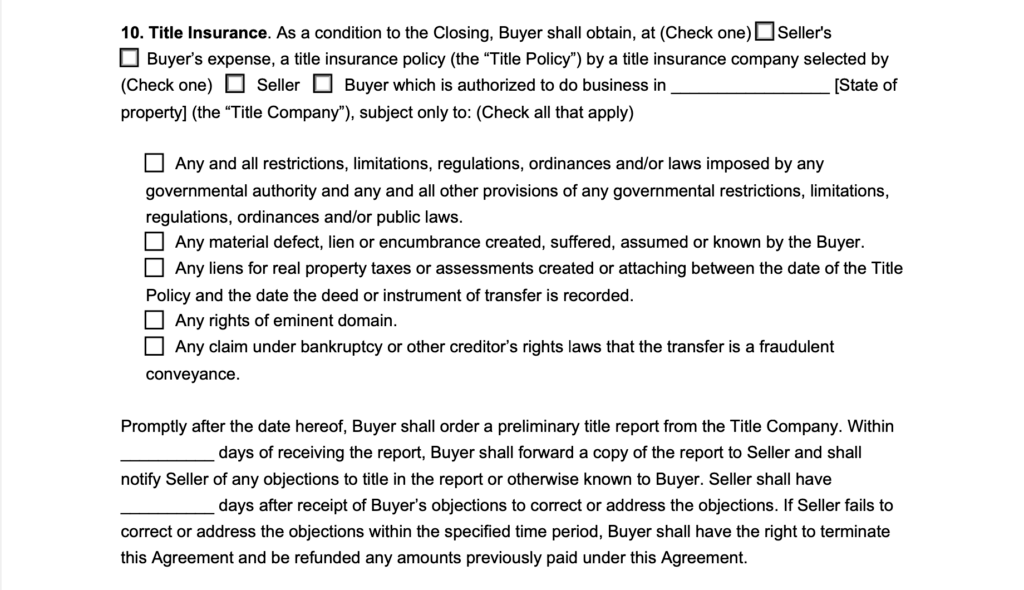
19. Closing Date and Location. Provide the date and location (street address) of the transaction’s closing.
20. Seller Deliverables. The purchase agreement provides for some standard seller closing deliverables. Add any additional seller closing deliverables on a purchase agreement form or identify your own.
21. Buyer Closing Deliverables. The purchase agreement provides for some standard buyer closing deliverables. You can choose to add any additional buyer closing deliverables of your own.
22. Seller Closing Costs. Choose the closing costs the seller is responsible for.
23. Buyer Closing Costs. Identify the closing costs the buyer is responsible for.
24. Delayed Closing. Decide whether to allow the buyer to delay closing due to the buyer’s lender requiring additional documentation or information. If yes, provide the days the buyer can extend the closing.
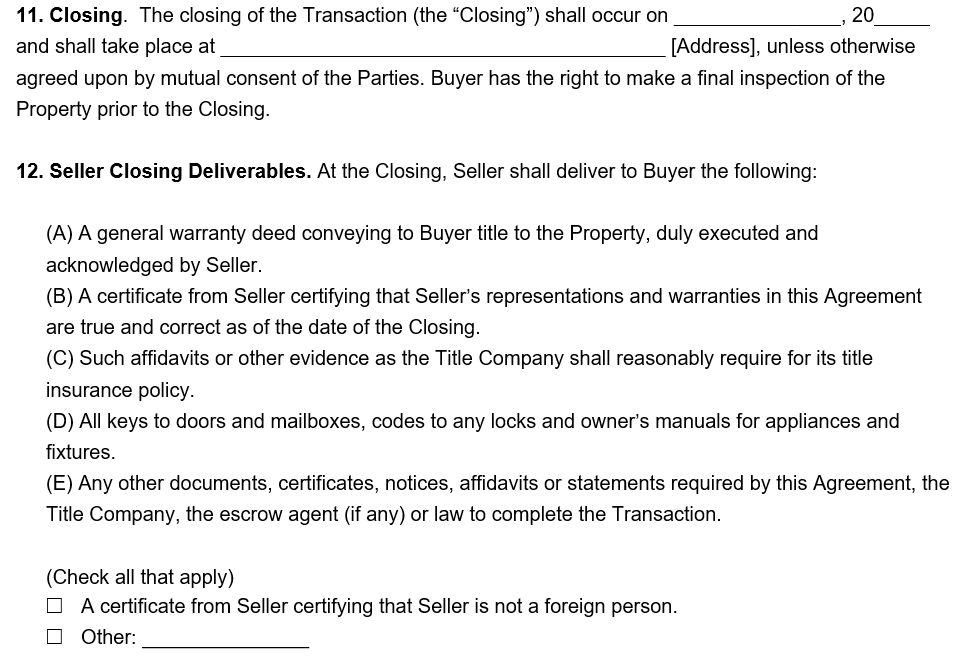
25. Possession of Property. Provide the date the seller must deliver possession of the property.

26. Lease Information. Write whether the seller is currently leasing the property. If yes, provide the name and date of the lease agreement as well as the name of the lessee.
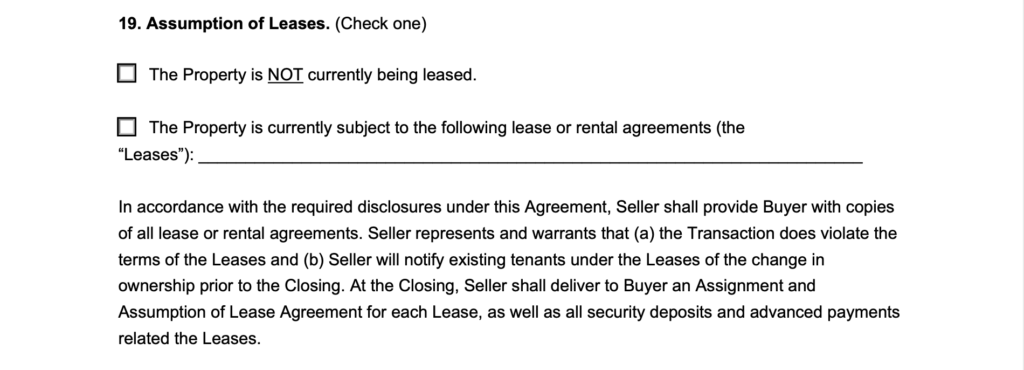
27. Governing Law. Choose the state’s laws that will govern the construction of the purchase agreement.
28. Disputes. If there are disputes, choose whether the buyer and seller will resolve disputes through court litigation, binding arbitration, mediation, or mediation then arbitration.
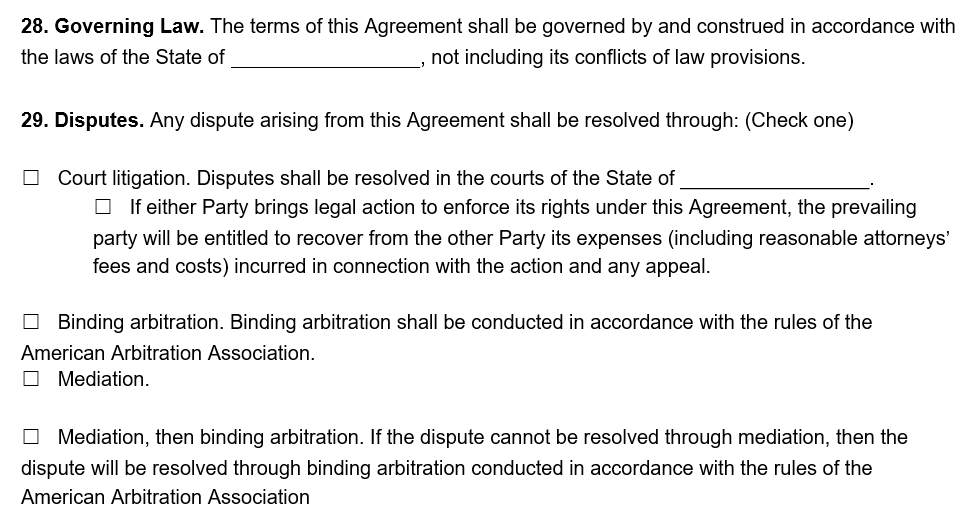
Miscellaneous. You can include additional provisions to the purchase agreement.
29. Seller’s Disclosure. If the property was built before 1978, the seller must disclose the presence of known lead-based paint or lead-based paint hazards and provide records and reports about lead-based paint and lead-based paint hazards.
30. Buyer’s Acknowledgement. The buyer must initial and sign the lead disclosure/warning statement, acknowledging the buyer received copies of all information about lead-based paint and lead-based paint hazards. The buyer must also acknowledge receiving a pamphlet titled “Protect Your Family from Lead in Your Home.”
31. Agent’s Acknowledgement. Suppose an agent is involved in the transaction. In that case, the agent must initial and sign the lead disclosure/warning statement, acknowledging the agent informed the seller of the seller’s obligations under 42 USC §4852d.
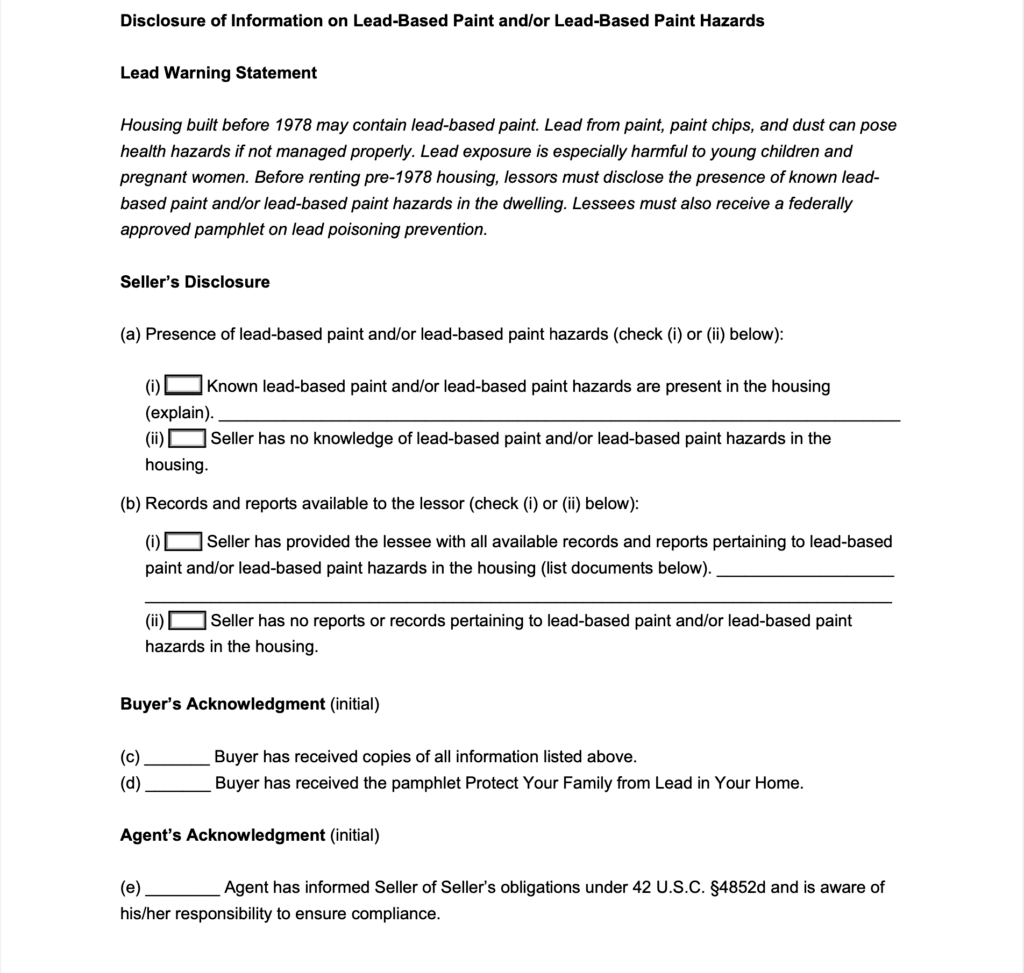
Below, you can see a purchase and sale agreement sample. Download our free blank purchase agreement template in Word or PDF format: